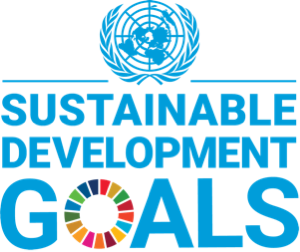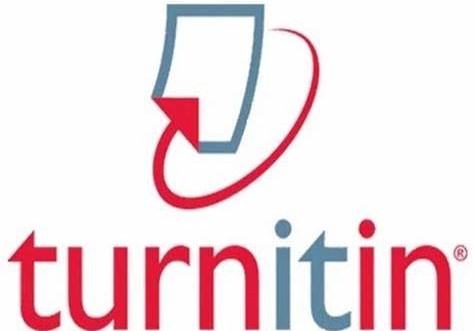Modeling and Grey Relational Multi-response Optimization of Chemical Additives and Engine Parameters on Performance Efficiency of Diesel Engine
DOI:
https://doi.org/10.52812/ijgs.33Keywords:
Diesel engine, optimization, Taguchi grey relational analysis, break thermal efficiency, emissions, break specific fuel consumptionAbstract
Singular optimization of engine conditions for better engine performance have been studied extensively. However, in the practical sense, more than one performance characteristics are essential in the optimization of engine conditions. The current study investigates the effect, optimization, and modeling of engine conditions on multi-characteristics of a single cylinder-dual direct injection-water cooled diesel engine with the help of Taguchi-grey relational and regression analyses. The engine conditions employed are engine load, hydrogen, multi-walled carbon nanotubes (MWCNTs), ignition pressure, and ignition timing, at four different levels. The engine performance characteristics analyzed were brake thermal efficiency (BTE), brake specific fuel consumption (BSFC), hydrocarbons (HC), nitrogen oxide (NOx), carbon monoxide (CO), and carbon dioxide (CO2). The results showed that there was a similar behavioral pattern of the effect of engine conditions on engine performance, except for ignition timing. The optimal settings for better engine performance were obtained at 25% engine load, 20% hydrogen, 50 ppm MWCNTs, 220 bar ignition pressure, and 21 obTDC ignition timing. Interestingly, the discovered optimal did not fall within the considered experimental runs, however, the predicted optimal engine performance was within 95% confidence bounds. It is recommended that the experimental work based on the obtained optimal settings should be conducted to elucidate the efficacy of the confirmation analysis. The analysis of variance showed that the engine load was the most significant factor on the overall engine performance, having a contribution of 71.47%, followed by hydrogen and MWCNTs. Also, the ignition pressure and timing were not significant on the overall engine performance, which showed a need to place more attention on the significant factors for better engine performance. The mathematical and graphical modeling showed the efficacy of the design analysis, while the interaction plots showed broader detailed factor settings for better engine performance.
References
Abifarin, J. K. (2021). Taguchi grey relational analysis on the mechanical properties of natural hydroxyapatite: effect of sintering parameters. The International Journal of Advanced Manufacturing Technology, 117, 49–57. https://doi.org/10.1007/s00170-021-07288-9
Abifarin, J. K., Fidelis, F. B., Abdulrahim, M. Y., Oyedeji, E. O., Nkwuo, T., & Prakash, C. (2022a). Response Surface Grey Relational Analysis On The Manufacturing of High Grade Biomedical Ti-13Zr-13Nb. Research Square. https://doi.org/10.21203/rs.3.rs-1225030/v1
Abifarin, J. K., Obada, D. O., Dauda, E. T., & Oyedeji, E. O. (2021a). Taguchi grey relational optimization of the multi-mechanical characteristics of kaolin reinforced hydroxyapatite: effect of fabrication parameters. International Journal of Grey Systems, 1(2), 20-32. https://doi.org/10.52812/ijgs.30
Abifarin, J. K., Prakash, C., & Singh, S. (2021b). Optimization and significance of fabrication parameters on the mechanical properties of 3D printed chitosan/PLA scaffold. Materials Today: Proceedings, 50 (Part 5), 2018-2025. https://doi.org/10.1016/j.matpr.2021.09.386
Abifarin, J. K., Suleiman, M. U., Abifarin, E. A., Fidelis, F. B., Oyelakin, O. K., Jacob, D. I., & Abdulrahim, M. Y. (2022b). Fabrication of mechanically enhanced hydroxyapatite scaffold with the assistance of numerical analysis. The International Journal of Advanced Manufacturing Technology, 118, 3331–3344. https://doi.org/10.1007/s00170-021-08184-y
Abu-Jrai, A., Rodríguez-Fernández, J., Tsolakis, A., Megaritis, A., Theinnoi, K., Cracknell, R. F., & Clark, R. H. (2009). Performance, combustion and emissions of a diesel engine operated with reformed EGR. Comparison of diesel and GTL fuelling. Fuel, 88(6), 1031-1041. https://doi.org/10.1016/j.fuel.2008.12.001
Arbab, M. I., Masjuki, H. H., Varman, M., Kalam, M. A., Imtenan, S., & Sajjad, H. (2013). Fuel properties, engine performance and emission characteristic of common biodiesels as a renewable and sustainable source of fuel. Renewable and Sustainable Energy Reviews, 22, 133-147. https://doi.org/10.1016/j.rser.2013.01.046
Awodi, E., Ishiaku, U. S., Yakubu, M. K., & Abifarin, J. K. (2021). Experimentally Predicted Optimum Processing Parameters Assisted by Numerical Analysis on the Multi-physicomechanical Characteristics of Coir Fiber Reinforced Recycled High Density Polyethylene Composites. Research Square. https://doi.org/10.21203/rs.3.rs-591200/v1
Hamzaçebi, C., & Pekkaya, M. (2011). Determining of stock investments with grey relational analysis. Expert Systems with Applications, 38(8), 9186-9195. https://doi.org/10.1016/j.eswa.2011.01.070
Javed, S. A. (2019). A novel research on grey incidence analysis models and its application in project management (PhD dissertation). Nanjing University of Aeronautics and Astronautics. Nanjing, PR China.
Javed, S. A., Khan, A. M., Dong, W., Raza, A., & Liu, S. (2019). Systems evaluation through new grey relational analysis approach: an application on thermal conductivity—petrophysical parameters’ relationships. Processes, 7(6), 348. https://doi.org/10.3390/pr7060348
Julong, D. (1989). Introduction to Grey System Theory. The Journal of Grey System, 1(1), 1-24.
Kalam, M. A., Masjuki, H. H., Jayed, M. H., & Liaquat, A. M. (2011). Emission and performance characteristics of an indirect ignition diesel engine fuelled with waste cooking oil. Energy, 36(1), 397-402. https://doi.org/10.1016/j.energy.2010.10.026
Koten, H., Yilmaz, M., & Zafer Gul, M. (2014). Compressed biogas-diesel dual-fuel engine optimization study for ultralow emission. Advances in Mechanical Engineering, 6, 571063. https://doi.org/10.1155/2014/571063
Leung, D. Y., Luo, Y., & Chan, T. L. (2006). Optimization of exhaust emissions of a diesel engine fuelled with biodiesel. Energy & Fuels, 20(3), 1015-1023. https://doi.org/10.1021/ef050383s
Li, L., Wang, J., Wang, Z., & Liu, H. (2015). Combustion and emissions of compression ignition in a direct injection diesel engine fueled with pentanol. Energy, 80, 575-581. https://doi.org/10.1016/j.energy.2014.12.013
Li, X., Wang, Z., Zhang, L., Zou, C., & Dorrell, D. D. (2019). State-of-health estimation for Li-ion batteries by combing the incremental capacity analysis method with grey relational analysis. Journal of Power Sources, 410, 106-114. https://doi.org/10.1016/j.jpowsour.2018.10.069
Lin, L., Cunshan, Z., Vittayapadung, S., Xiangqian, S., & Mingdong, D. (2011). Opportunities and challenges for biodiesel fuel. Applied Energy, 88(4), 1020-1031. https://doi.org/10.1016/j.apenergy.2010.09.029
Mahmoudi, A., Javed, S. A., Liu, S., & Deng, X. (2020). Distinguishing coefficient driven sensitivity analysis of GRA model for intelligent decisions: application in project management. Technological and Economic Development of Economy, 26(3), 621-641. https://doi.org/10.3846/tede.2020.1189
Manigandan, S., Atabani, A. E., Ponnusamy, V. K., Pugazhendhi, A., Gunasekar, P., & Prakash, S. (2020). Effect of hydrogen and multiwall carbon nanotubes blends on combustion performance and emission of diesel engine using Taguchi approach. Fuel, 276, 118120. https://doi.org/10.1016/j.fuel.2020.118120
Masoudi, N., & Zaccour, G. (2017). Adapting to climate change: Is cooperation good for the environment?. Economics Letters, 153, 1-5. https://doi.org/10.1016/j.econlet.2017.01.018
Ofodu, J. C. & Abifarin, J. K. (2022). Employment of probability based multi-response optimization in high voltage thermofluids. Military Technical Courier, 70(2), 393-408. https://doi.org/10.5937/vojtehg70-35764
Oparanti, S. O., Abdelmalik, A. A., Khaleed, A. A., Abifarin, J. K., Suleiman, M. U., & Oteikwu, V. E. (2022). Synthesis and characterization of cooling biodegradable nanofluids from non-edible oil for high voltage application. Materials Chemistry and Physics, 277, 125485. https://doi.org/10.1016/j.matchemphys.2021.125485
Prabhu, A., & Ramanan, M. V. (2020). Emission and performance analysis of pentanol-diesel blends in unmodified diesel engine. International Journal of Ambient Energy, 41(6), 699-702. https://doi.org/10.1080/01430750.2018.1490356
Ramachander, J., Gugulothu, S. K., Sastry, G. R. K., Panda, J. K., & Surya, M. S. (2021). Performance and emission predictions of a CRDI engine powered with diesel fuel: A combined study of injection parameters variation and Box-Behnken response surface methodology based optimization. Fuel, 290, 120069. https://doi.org/10.1016/j.fuel.2020.120069
Ren, Y., Huang, Z., Miao, H., Di, Y., Jiang, D., Zeng, K., ... & Wang, X. (2008). Combustion and emissions of a DI diesel engine fuelled with diesel-oxygenate blends. Fuel, 87(12), 2691-2697. https://doi.org/10.1016/j.fuel.2008.02.017
Senthilkumar, S., Karthick, A., Madavan, R., Moshi, A. A. M., Bharathi, S. S., Saroja, S., & Dhanalakshmi, C. S. (2021). Optimization of transformer oil blended with natural ester oils using Taguchi-based grey relational analysis. Fuel, 288, 119629. https://doi.org/10.1016/j.fuel.2020.119629
Sivaramakrishnan, K., & Ravikumar, P. (2014). Optimization of operational parameters on performance and emissions of a diesel engine using biodiesel. International Journal of Environmental Science and Technology, 11(4), 949-958. https://doi.org/10.1007/s13762-013-0273-5
Taguchi, G., & Phadke, M. S. (1989). Quality engineering through design optimization. In Quality Control, Robust Design, and the Taguchi Method (pp. 77-96). Springer, Boston, MA. https://doi.org/10.1007/978-1-4684-1472-1_5
Taguchi, G., Chowdhury, S., Wu, Y., Taguchi, S., & Yano, H. (2005). Taguchi's Quality Engineering Handbook. Wiley-Interscience.
Taguchi, G., Wu, Y., & Chodhury, S. (2000). Mahalanobis-Taguchi System. McGraw-Hill Professional.
Taufiqurrahmi, N., & Bhatia, S. (2011). Catalytic cracking of edible and non-edible oils for the production of biofuels. Energy & Environmental Science, 4(4), 1087-1112. https://doi.org/10.1039/C0EE00460J
Tosun, N. (2006). Determination of optimum parameters for multi-performance characteristics in drilling by using grey relational analysis. The International Journal of Advanced Manufacturing Technology, 28(5), 450-455. https://doi.org/10.1007/s00170-004-2386-y
Wallington, T. J., Lambert, C. K., & Ruona, W. C. (2013). Diesel vehicles and sustainable mobility in the US. Energy Policy, 54, 47-53. https://doi.org/10.1016/j.enpol.2011.11.068
Wu, Y., Zhou, F., & Kong, J. (2020). Innovative design approach for product design based on TRIZ, AD, fuzzy and Grey relational analysis. Computers & Industrial Engineering, 140, 106276. https://doi.org/10.1016/j.cie.2020.106276
.

Downloads
Published
How to Cite
Issue
Section
License
Copyright (c) 2022 Science Insight

This work is licensed under a Creative Commons Attribution-NonCommercial 4.0 International License.
Creative Commons Non Commercial CC BY-NC: The work is distributed under the terms of the Creative Commons Attribution-NonCommercial 4.0 License which permits non-commercial use, reproduction and distribution of the work without further permission provided the original work is properly attributed.











